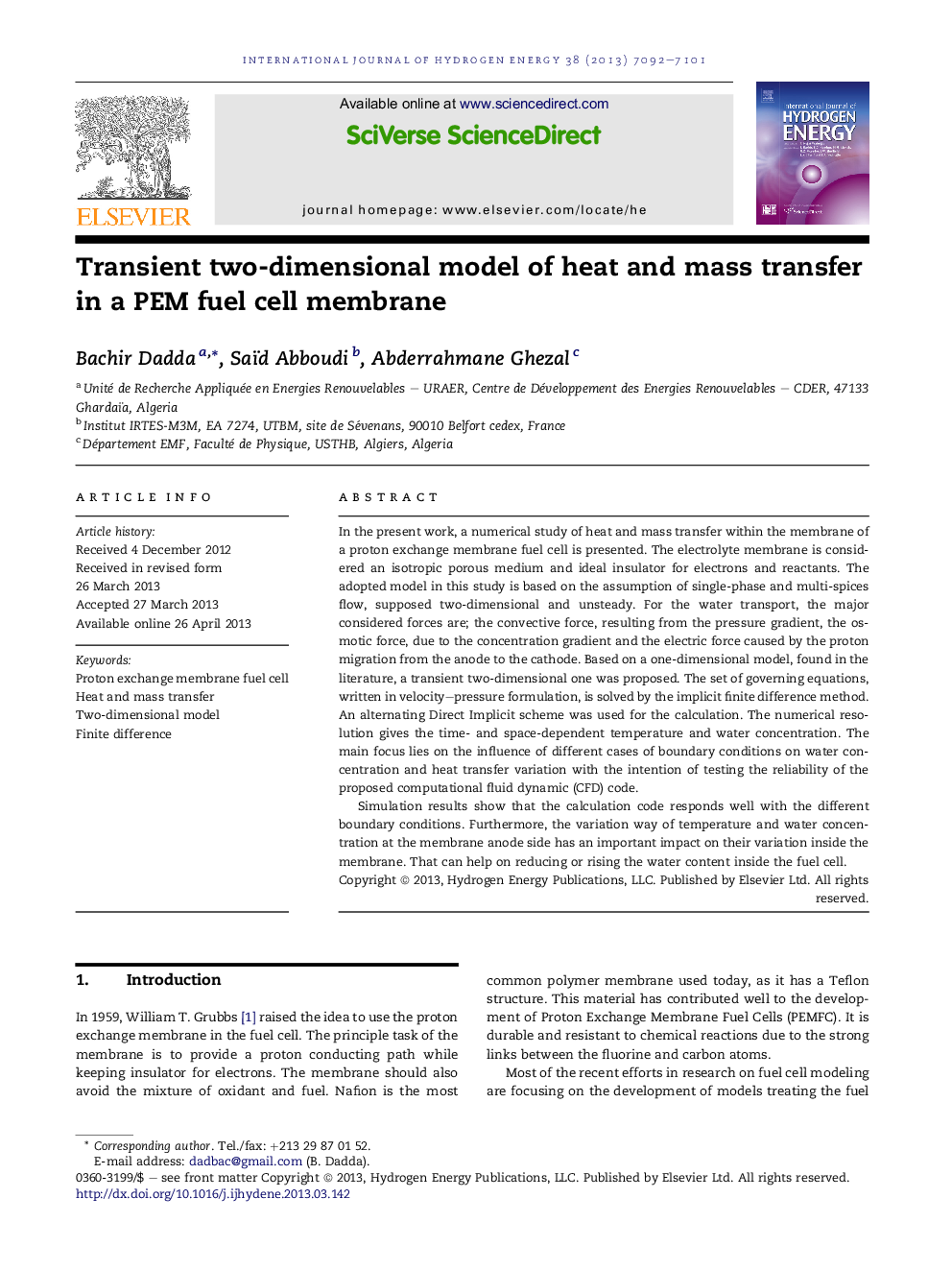| کد مقاله | کد نشریه | سال انتشار | مقاله انگلیسی | نسخه تمام متن |
|---|---|---|---|---|
| 1277493 | 1497528 | 2013 | 10 صفحه PDF | دانلود رایگان |

• A transient 2D model of heat and mass transfer in a PEMFC membrane was proposed.
• Finite difference method was used for the nonlinear governing equations resolution.
• The proposed 2D model along with the elaborated CFD code gives reliable results.
• Boundary conditions effect on temperature and water concentration was investigated.
• The inlet temperature affects the water concentration variation in the membrane.
In the present work, a numerical study of heat and mass transfer within the membrane of a proton exchange membrane fuel cell is presented. The electrolyte membrane is considered an isotropic porous medium and ideal insulator for electrons and reactants. The adopted model in this study is based on the assumption of single-phase and multi-spices flow, supposed two-dimensional and unsteady. For the water transport, the major considered forces are; the convective force, resulting from the pressure gradient, the osmotic force, due to the concentration gradient and the electric force caused by the proton migration from the anode to the cathode. Based on a one-dimensional model, found in the literature, a transient two-dimensional one was proposed. The set of governing equations, written in velocity–pressure formulation, is solved by the implicit finite difference method. An alternating Direct Implicit scheme was used for the calculation. The numerical resolution gives the time- and space-dependent temperature and water concentration. The main focus lies on the influence of different cases of boundary conditions on water concentration and heat transfer variation with the intention of testing the reliability of the proposed computational fluid dynamic (CFD) code.Simulation results show that the calculation code responds well with the different boundary conditions. Furthermore, the variation way of temperature and water concentration at the membrane anode side has an important impact on their variation inside the membrane. That can help on reducing or rising the water content inside the fuel cell.
Journal: International Journal of Hydrogen Energy - Volume 38, Issue 17, 10 June 2013, Pages 7092–7101